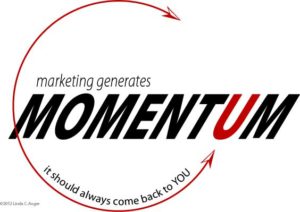 We’ve all said it, done it, written it, read it in marketing and elsewhere. We’ve all used the ubiquitous cliché.
We’ve all said it, done it, written it, read it in marketing and elsewhere. We’ve all used the ubiquitous cliché.
The guy in the office you call, “A breed apart.”
Mentioning the “hustle and bustle” of your day.
Things that will “knock your socks off.”
IT’S TIME TO STOP.
Clichés creep into our writing like ants onto an unswept floor. It happens when we let our thoughts wander, or push too hard to get things done in less time than they need. Think about how often you hear people say, “ya know,” or “I’m, like” in ordinary conversation. Clichés, yes – because we are not as mindful of our words as we should be.
“Clichés were like plaque in the arteries of the imagination,
they clogged the sense of what was possible. “
(Charlie Jane Anders)
Here are five clichés to avoid in marketing, or any form of communication:
- At this point in time… Each second that passes is “this point in time,” By the time you’ve finished saying or reading the phrase, the point in time has passed. Instead of “At this point in time you may be shopping for a new oven,” just say, “Shopping for a new oven…”
- Each and every… “each” is individual, “every”is collective. Pick one or the other.
- In other words… Generally used as a dependent phrase when you think the way you originally phrased something is too complex to be understood. Rather than expressing it twice, work a little harder to simplify what your saying right from the start.
- Quite simply… This is a variation of “In other words.”
- Due to the fact that… Stop it. Just state the fact. “Tom won’t be at work today, he broke his leg skiing over the weekend.”
What clichés do you think are the most annoying?


 And, it’s a circle game. As you create and refine your marketing plans, keep these three things in mind:
And, it’s a circle game. As you create and refine your marketing plans, keep these three things in mind: Green Stamps were the first “trading stamp” rewards program offered in America. Wikipedia says that in the 1960s, The Sperry & Hutchinson Company (S&H) issued more stamps than the U.S. Post Office, and they were available everywhere. In those long ago days, there were no credit cards or computerized cash registers, either. How ever did we survive?
Green Stamps were the first “trading stamp” rewards program offered in America. Wikipedia says that in the 1960s, The Sperry & Hutchinson Company (S&H) issued more stamps than the U.S. Post Office, and they were available everywhere. In those long ago days, there were no credit cards or computerized cash registers, either. How ever did we survive? A few months ago I added a new element to my weekend ritual of shredding the name and address labels from mail received during the week. I weigh the bags before I put them in my trash hauler’s recycling container. Last week’s batch was ten pounds, including the unsolicited magazines, flyers, and catalogs on which the labels came.
A few months ago I added a new element to my weekend ritual of shredding the name and address labels from mail received during the week. I weigh the bags before I put them in my trash hauler’s recycling container. Last week’s batch was ten pounds, including the unsolicited magazines, flyers, and catalogs on which the labels came. Drilling 200 feet below the earth’s surface in Vermillion County, Illinois, coal miners found the remains of a 15-square mile fossilized rain forest.
Drilling 200 feet below the earth’s surface in Vermillion County, Illinois, coal miners found the remains of a 15-square mile fossilized rain forest.